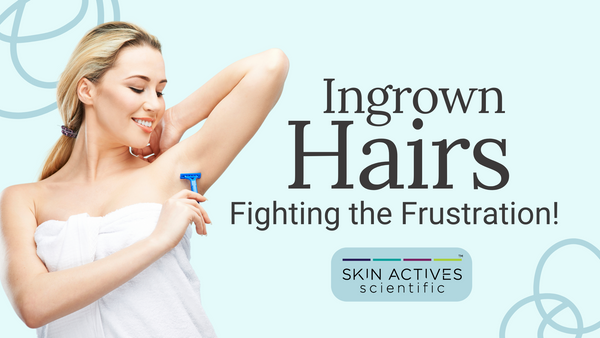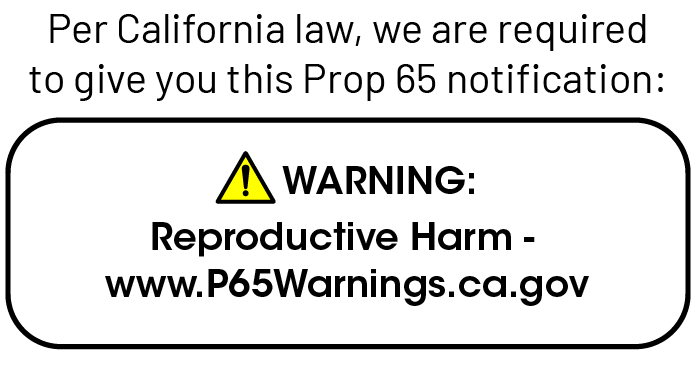Ingrown Hairs: Fighting the Frustration | Skin Actives
Posted by Mack Leonard on Jul 15th 2022
For those who suffer from ingrown hairs, shaving can change from an invigorating skin care exercise to a catalyst for frustrating skin concerns. In the time following a shave, a fresh patch of clean-shaven skin gives way to a range of unwanted blemishes from small red bumps to large, troublesome abscesses. The affected areas can be itchy, visually undesirable or even medically problematic due to the risk of infection. Those struggling with ingrown hairs may attempt numerous means of relieving it, often without success. Below, we’ll examine the diversity of individuals who suffer from ingrown hairs, the factors that contribute to them and the steps that can be taken to provide relief.
Am I the Only One Who Suffers from Ingrown Hairs?
The answer: decidedly not. While ingrown hairs are common in men, they also regularly affect women. Although men sometimes have the option to limit their exposure by growing a beard, professional, religious or cultural norms may prevent them from pursuing this option, forcing them to confront ingrown hairs head-on. On the other hand, women who suffer from ingrown hairs often feel as though they lack the alternative of letting the hair grow, as cosmetic and fashion expectations in some societies emphasize shaving. As a result, ingrown hairs are a widespread phenomenon affecting individuals across groups.
What are the Causes of Ingrown Hairs?
Unfortunately, some of the factors that contribute to ingrown hairs are inherent to the individuals who experience them. Research has shown that there is a genetic predisposition associated with ingrown hairs. Additionally, having curly hair increases the likelihood of ingrown hairs, and hair type is hardly under a person’s control. In women, menopausal changes in hormone profile can influence their susceptibility to skin issues related to ingrown hairs. Likewise, women with hirsutism, or excessive hair growth on unexpected areas of the body, are more likely to report negative experiences of this type.
However, not all factors associated with ingrown hairs are beyond our ability to control. Best practices in skin care and shaving can go a long way towards decreasing instances of ingrown hairs. We’ll address these and other preventative measures in detail later.
The Consequences of Ingrown Hairs
The physical process that leads to an ingrown hair stems from a hair, whether due to an obstruction or the shape of the hair itself, growing into the skin rather than away from it. When the hair curves back into the skin, it sets off an inflammatory response resulting in the red bumps and abscesses we notice in the mirror.
These symptoms are bad enough, as they can cause discomfort and unwanted blemishes. Worse, however, are the rarer but more severe outcomes, which can include lasting changes to skin texture, areas of uneven pigmentation or even harmful infection secondary to an abscess. Clearly, while some amount of ingrown hairs might be unavoidable for many, preventative measures should still be employed to limit their appearance and deter more severe outcomes.
How Can We Reduce Ingrown Hairs?
We sought out the expertise of our founder, Dr. Hannah Sivak, PhD, on best practices for managing ingrown hairs. In general, she advised refraining from shaving as the most effective approach to reducing or preventing ingrown hairs. For those unable or reluctant to forego shaving as a part of their routine, she spelled out this excellent guide on her blog:
- Before shaving, wet your skin with warm water, and use a lubricating formulation like Skin Actives Hydrating Shave Cream.
- Shave with a sharp single-blade razor in the direction your hair is growing.
- Use as few strokes of the razor as possible, decrease the stress on the skin
- Rinse the blade with water after every stroke.
- Don’t shave too closely to your skin, leave a little bit of stubble if you can.
- If you’re using an electric razor, hold it slightly above the surface of your skin.
As Dr. Sivak’s guide makes clear, choosing the right products, razors and shaving techniques is paramount when dealing with ingrown hairs. Hydrating Shave Cream is a fantastic choice for those with sensitive skin, as it contains aloe and beta glucan for soothing irritation. While razors with numerous blades that offer a “closer shave” may seem appealing, individuals seeking to avoid ingrown hairs may be better off avoiding them.
Although not directly involved with hair growth patterns, cleansing thoroughly before shaving with a non-inflammatory cleansing product such as Skin Actives’ Gentle Cream Cleanser is also recommended to reduce dirt and bacterial build-up on the skin and razor, reducing the likelihood of blemishes, abscesses and post-abscess infections.
Exfoliation as a Preventative Measure for Ingrown Hairs
Not all ingrown hairs result from a hair curving back into the skin on its own. Sometimes, the hair may be prevented from growing in the right direction by an external blockage, such as a tiny fragment of dead skin. This is where exfoliation comes in. Salicylic acid in the form of Ultra Clarifying Blemish Oil and retinyl acetate in our Vitamin A Cream can remove dead skin from follicles, allowing the hair to grow freely. As an added benefit, these products can also open up clogged pores, reducing the occurrence of acne.
Bonus Tips for Keeping Shaved Areas Smooth and Clear
Beyond the strategies outlined above, there are also a number of hair removal practices that can serve as alternatives to shaving. “Those include creams that dissolve hair and a laser or electric current (electrolysis) to remove the hair follicle for good,” Dr. Sivak notes. “I like the methods that use sanding paper, but they are only suitable for the legs.” Additionally, given findings associating occurrences of ingrown hair-related skin issues with changes in hormonal profile in women, medical advice may be justified to screen for underlying conditions.
Help is Out there for Ingrown Hairs!
Ingrown hairs and their associated skin concerns can be an ongoing source of frustration, especially for those with no easy alternative to shaving. Before becoming discouraged, be sure to review the guidance above and check whether implementing the best practices and alternative techniques help to resolve the problem. While some of the factors promoting ingrown hairs may be outside of our control, there is much we can do to prevent those factors from ultimately developing into visible, uncomfortable expressions on the skin.

